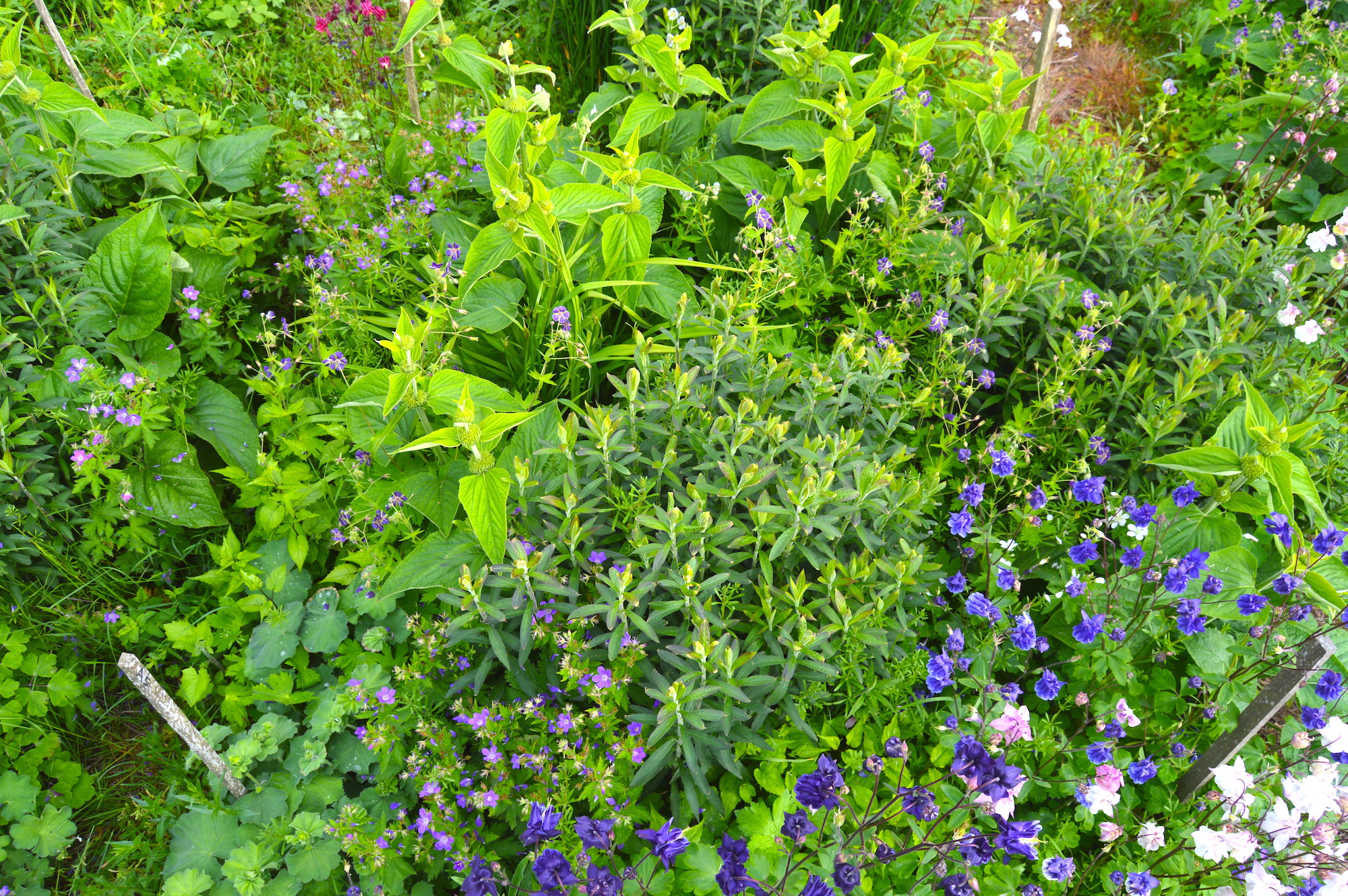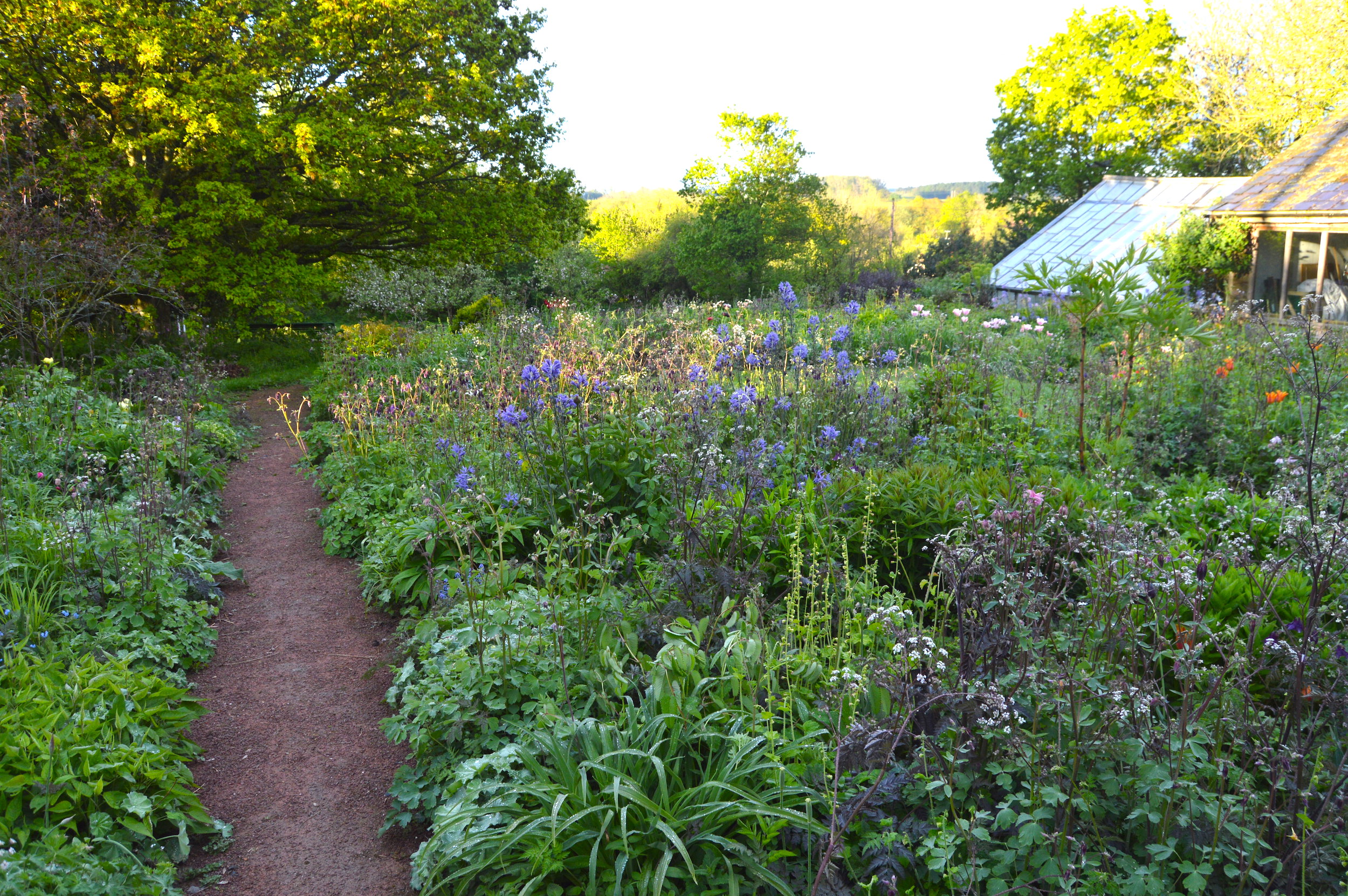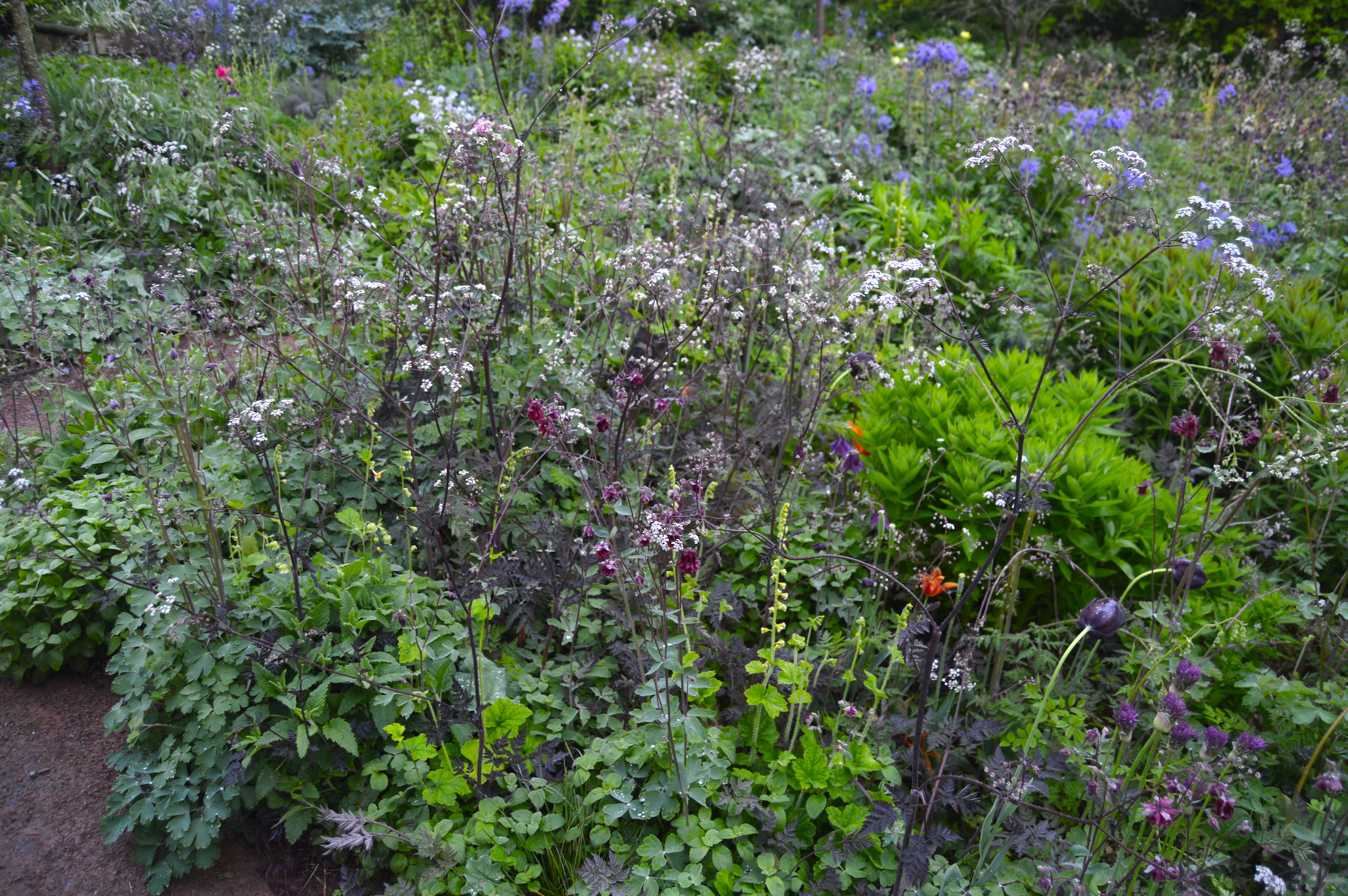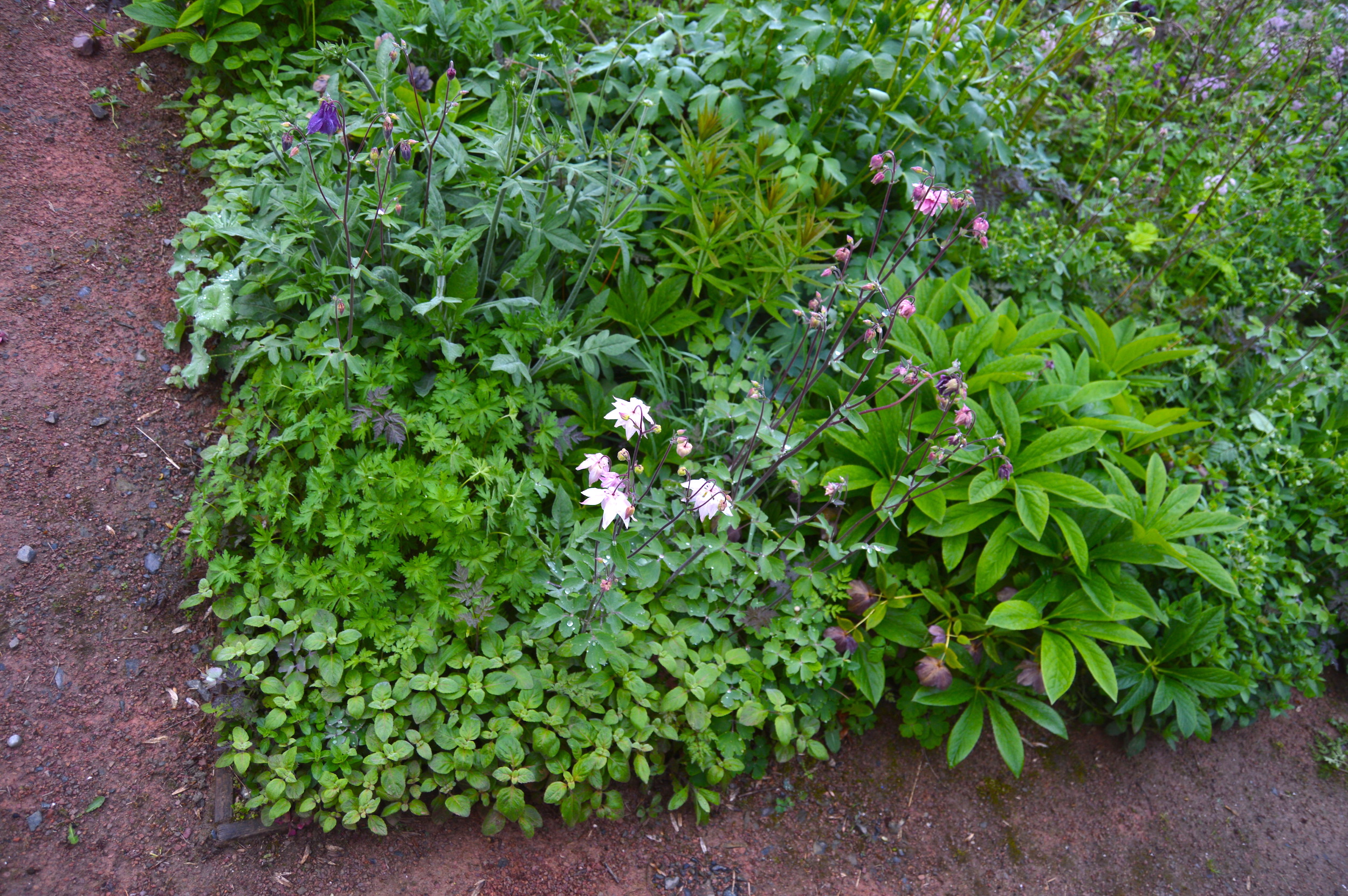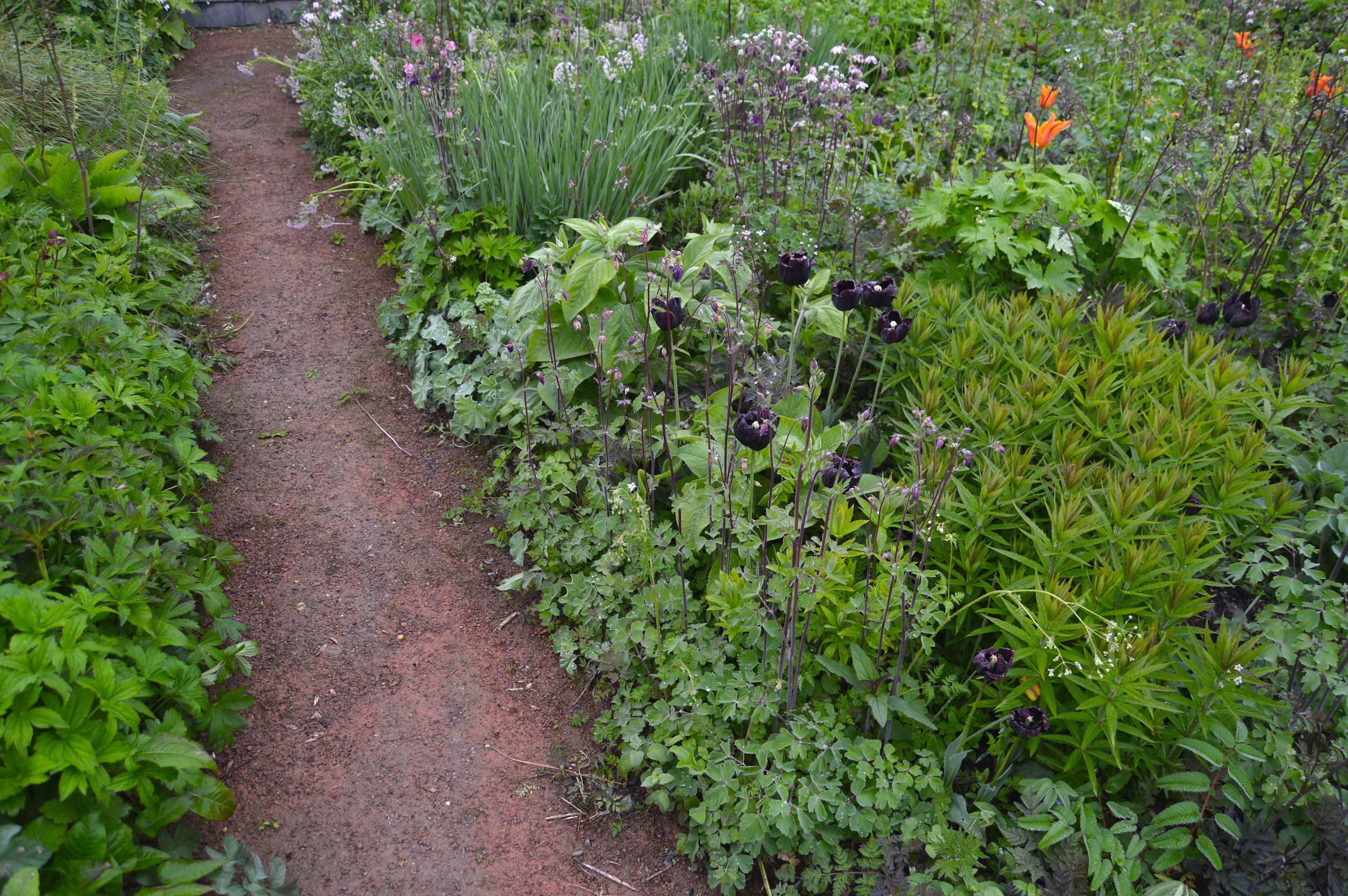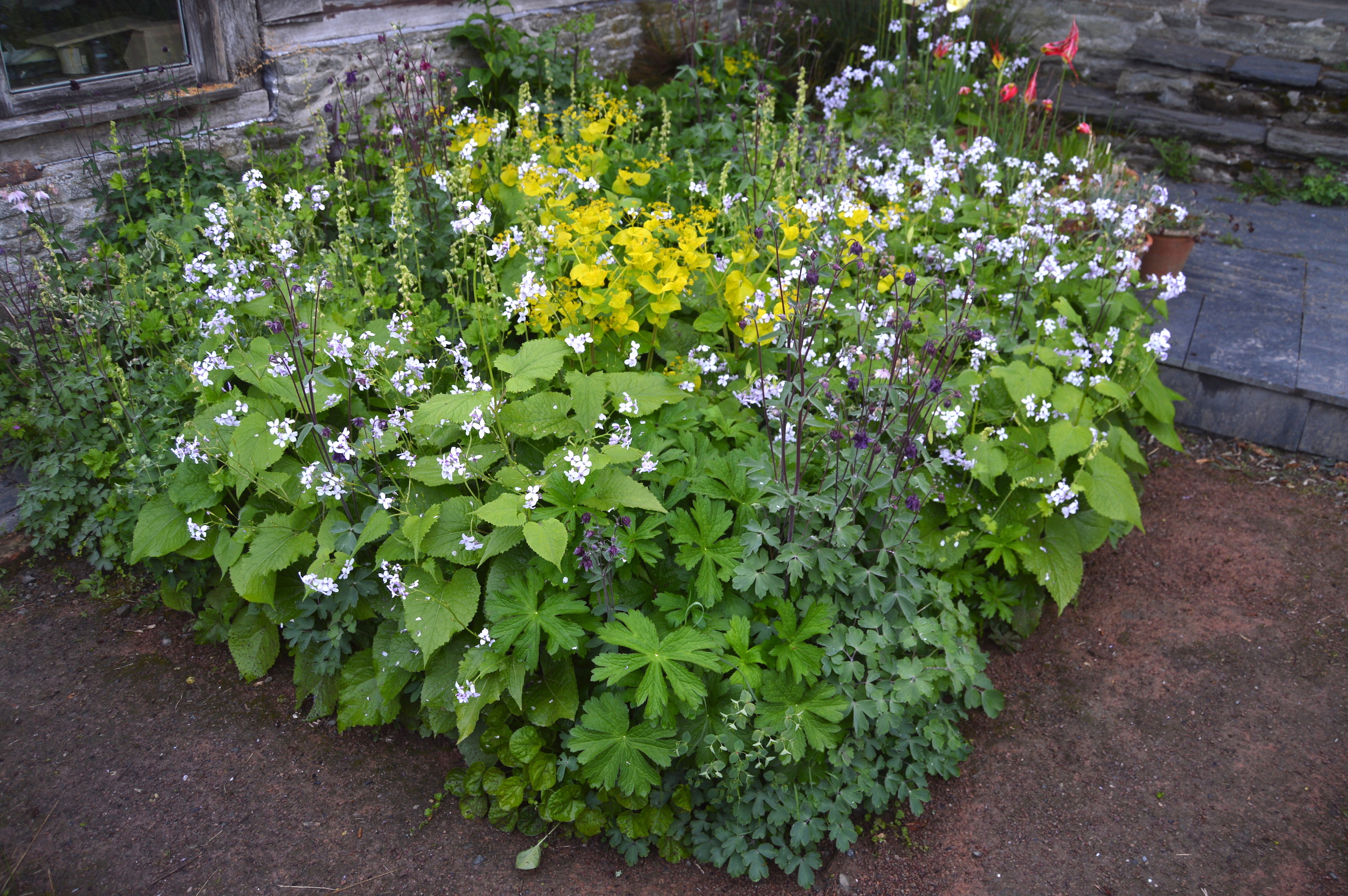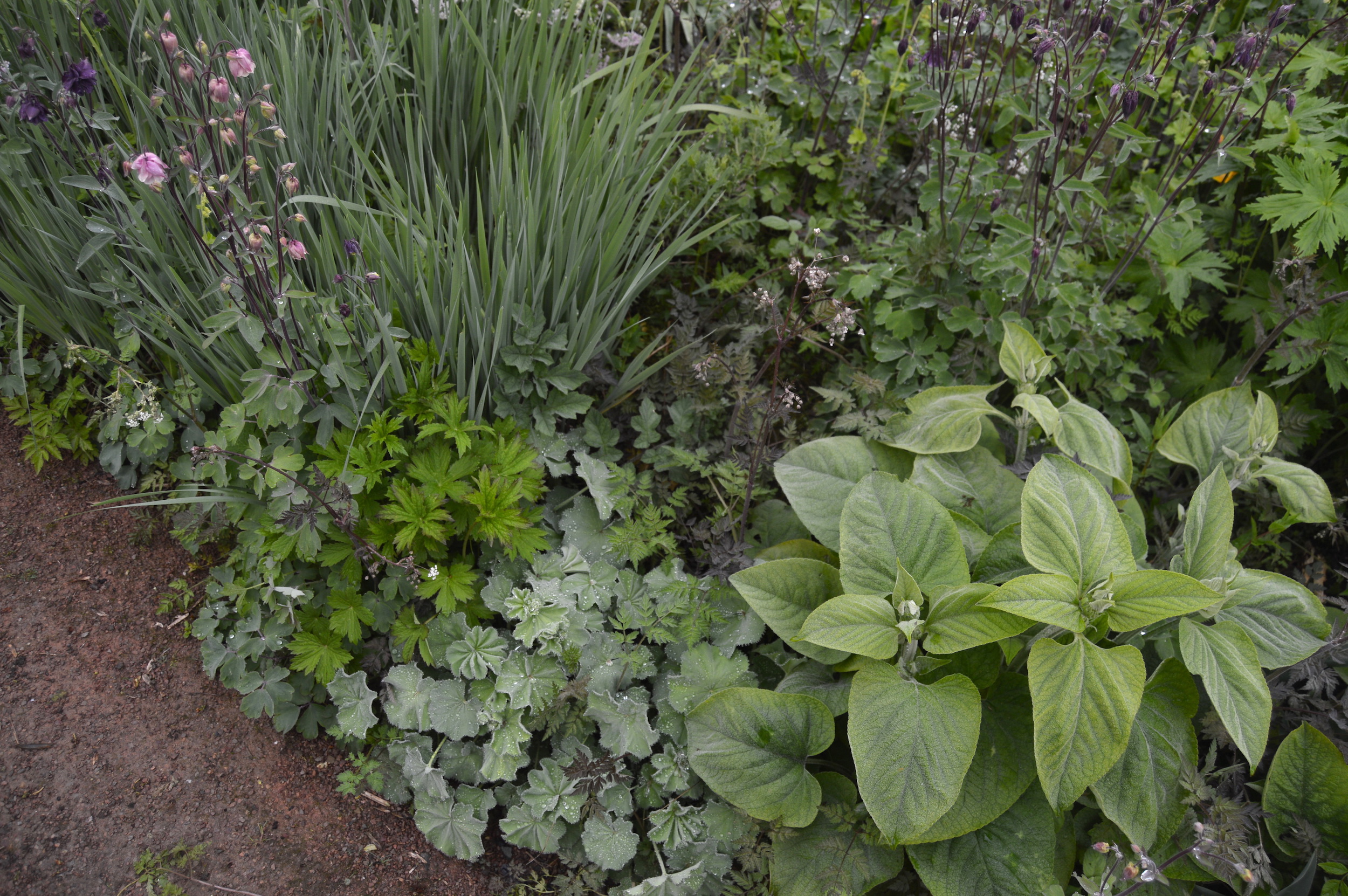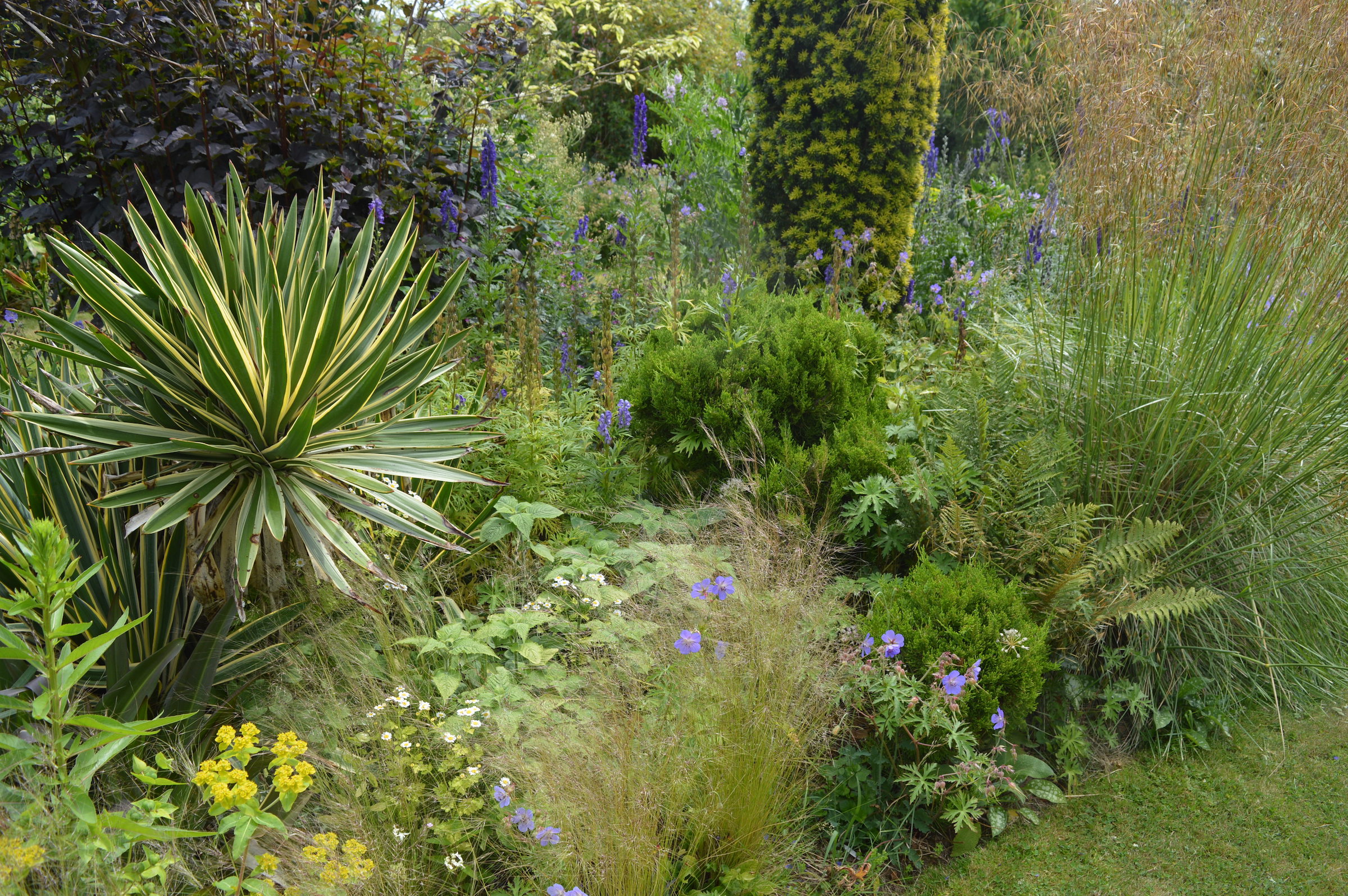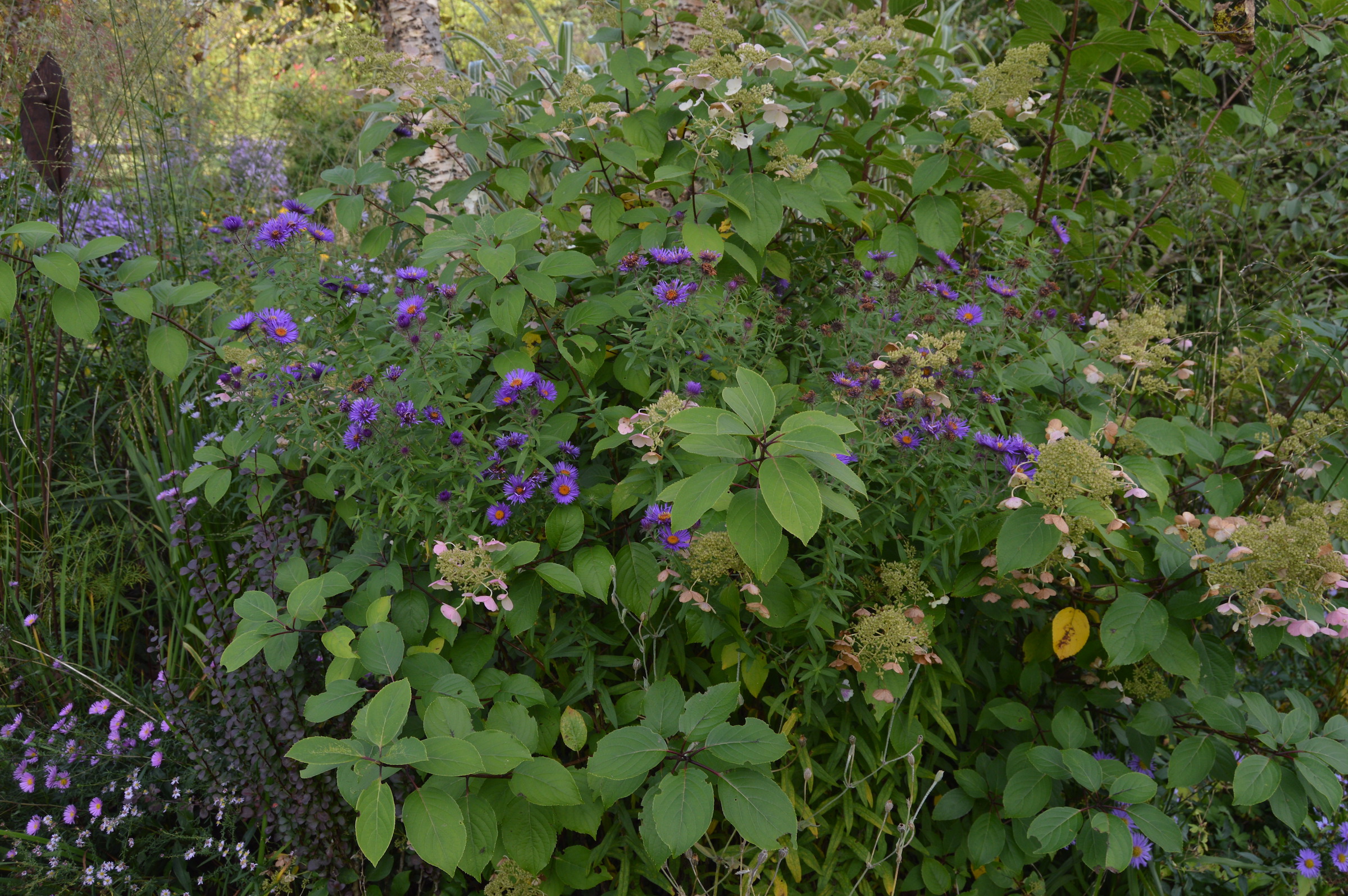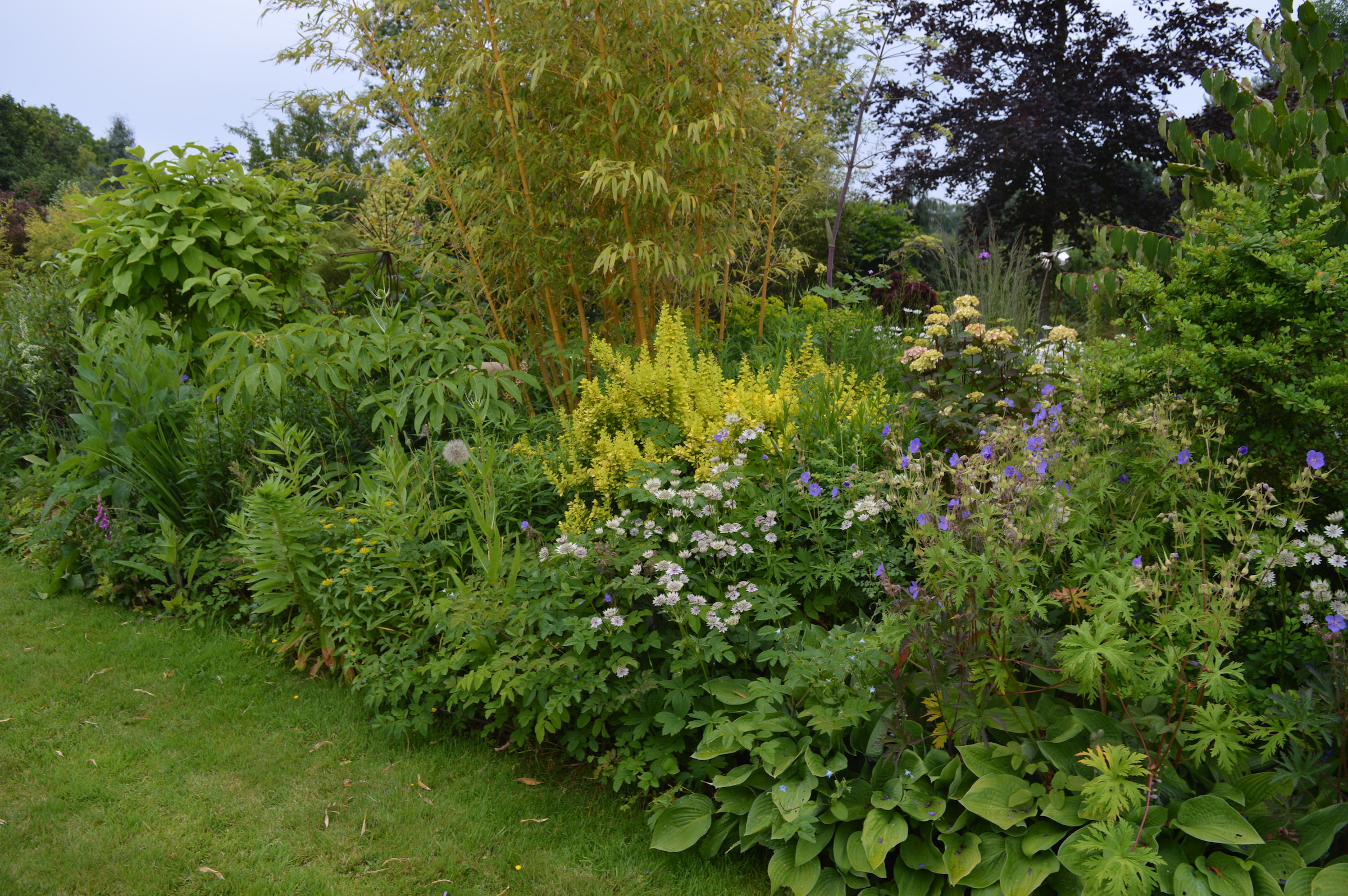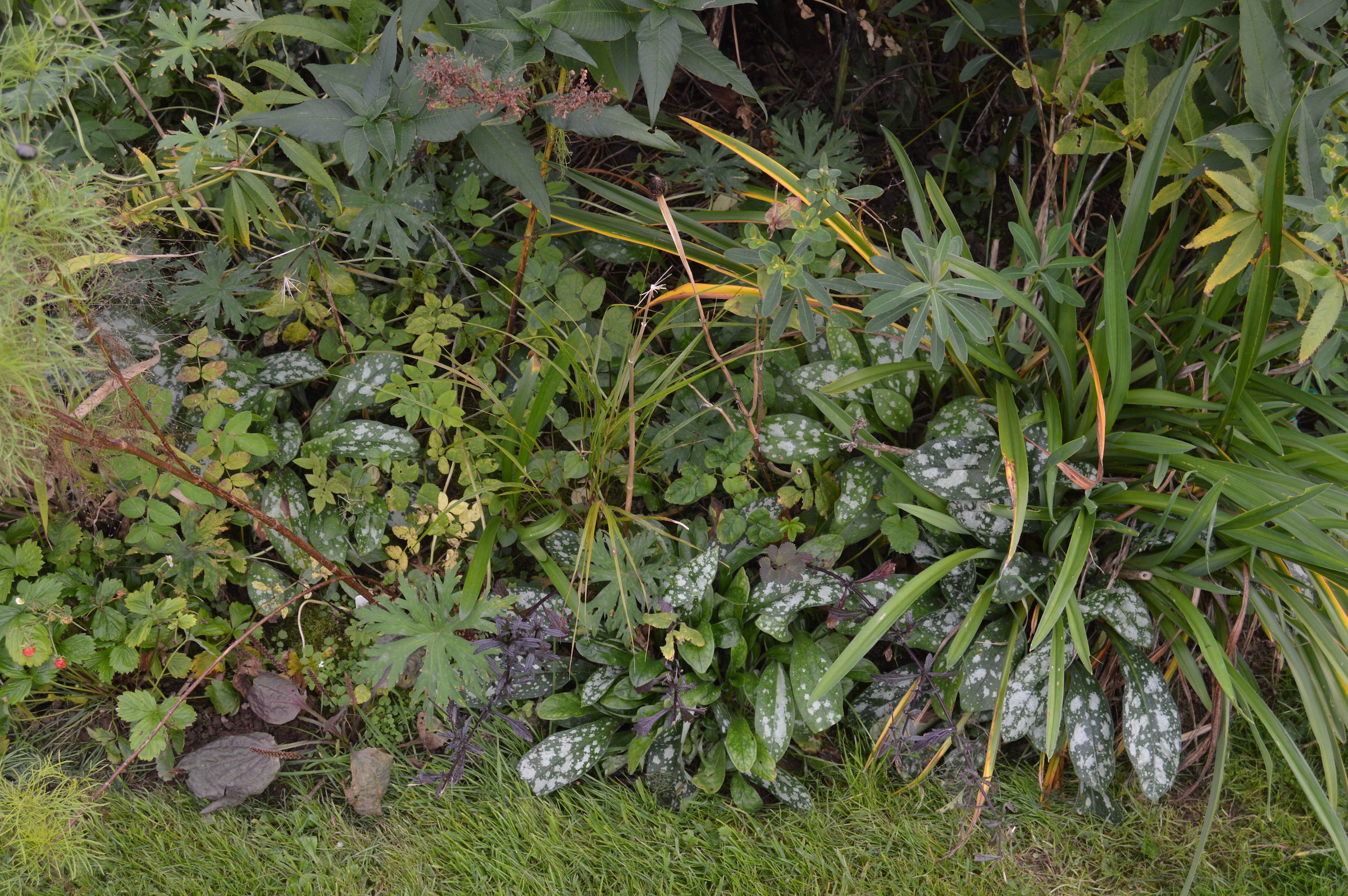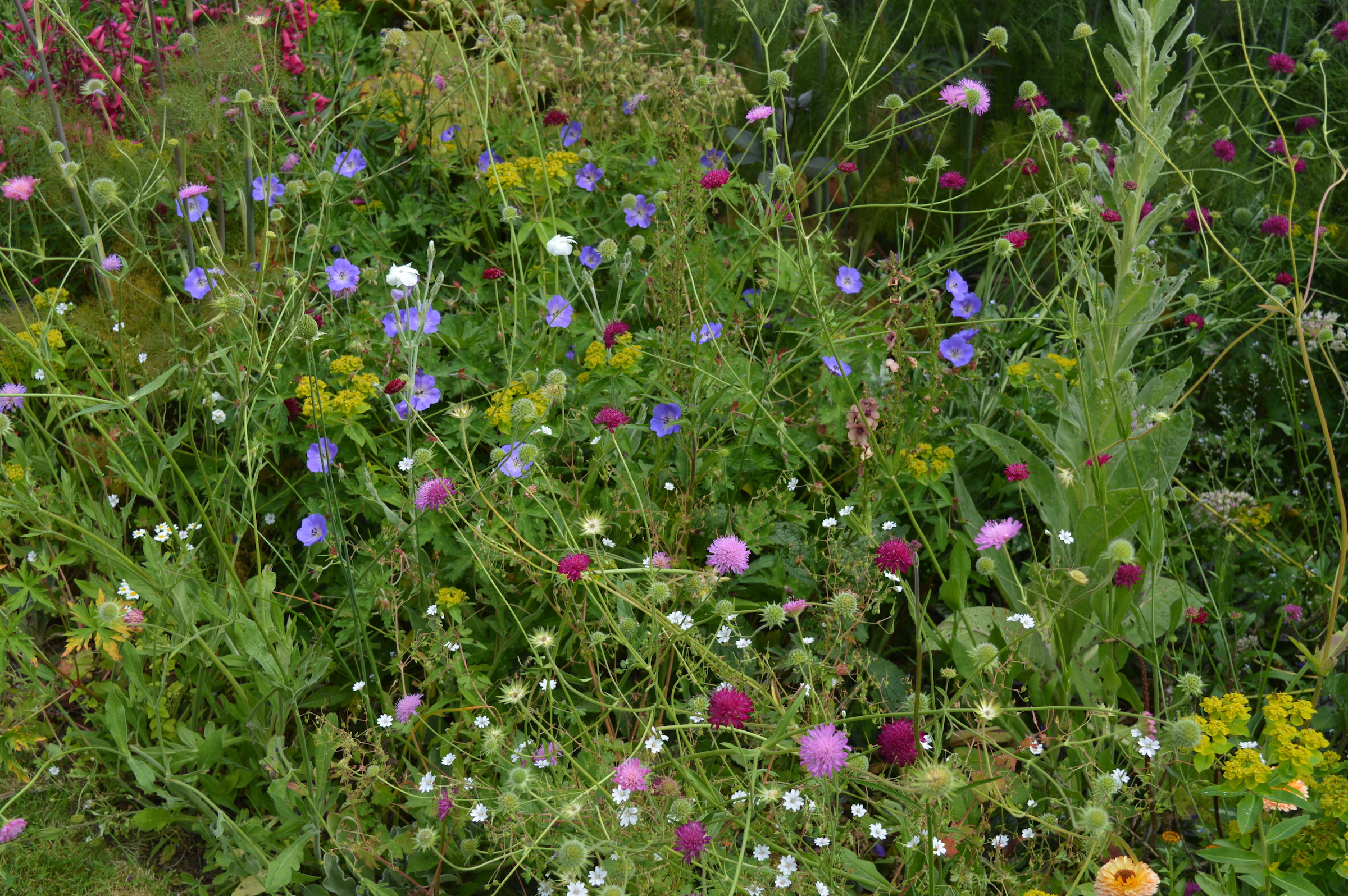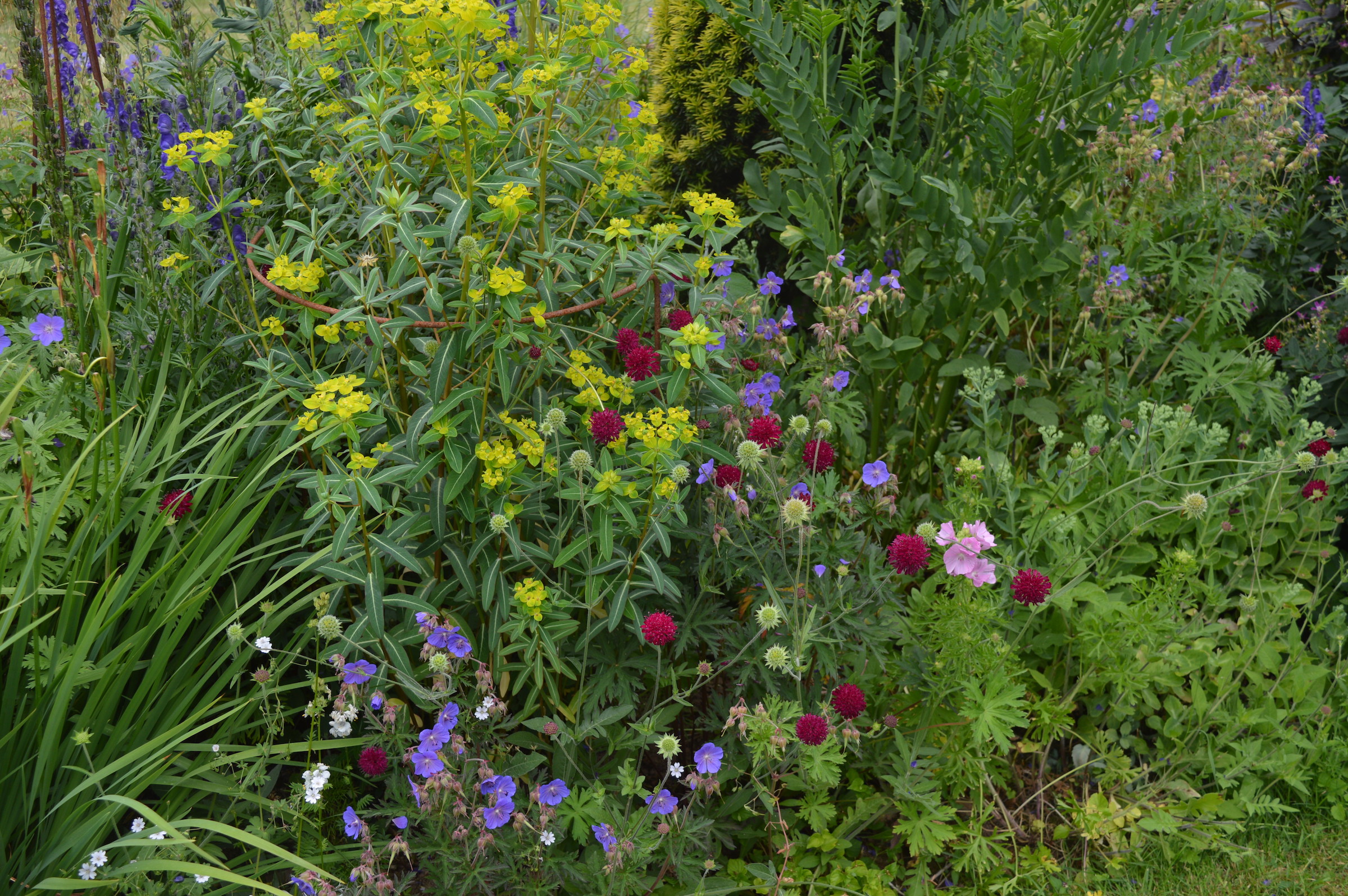Why is so much perennial planting so gappy?
Why do so many gardens, private and public, which are supposed to be about growing plants, look like displays of soil or exhibitions of mulch?
Here, I'd like to address the whole issue of planting density, with some observations based on the results of a seven year trial which has just been published in The Plantsman journal.
One of my high density trial plots in May 2017.
Over the course of gardening history, planting density has been getting tighter. Back in the 17th century, gardeners would plant out garden plants in splendid isolation, to emphasise their rarity and to draw attention to them. By the 19th century we had got as far as the ancestor to the modern border, nice and full by the end of the growing season but still pretty gappy by our standards. The modern Beth Chatto and Margery Fish inspired planting style allows, even encourages self-seeding and a certain amount of intermeshing, but there still seems to be an underlying fear amongst gardeners in letting plants get really tangled up in each other.
Part of the issue with planting density is perception: most of us seeing the activity of growing plants as growing individuals of desired plants rather than creating a vegetation which contains desirable plants. We imagine that plants are somehow more easily appreciated and managed when there is a cordon sanitaire of bare soil or mulch around them.
These are the diagrams of the research plots discussed in The Plantsman article
High density planting is sometimes criticised for obscuring the natural form of the plant. But what forms do plants, perennials in particular, really take? Growing something on its own may result in a pleasing form – an echinops might be a good example, a nice neat clump of basal leaves with a flower head emerging as the summer progresses. But a geranium? That neat hemisphere of leaves quickly turns to collapse after, or even during, flowering. The fact is that most perennials do not grow on their own – the denizens of low-density, semi-arid environments being the exception. Most grow at very high densities compared to garden plants and typically adapt their growh forms in response to the crowded environment around them. Some, and geraniums are a case in point, are extremely flexible and plastic in their habit of growth, with leaf and flowering stems which elongate and twist their way through surrounding plants seeking support from them in their struggle to get to the light.
Modern thinking on perennial planting density tends to favour around seven to nine plants per square metre, considerably more so than conventionally. Plantings quickly look full and potentially a good canopy can develop, but only if the plant forms used mesh together – which single cultivar blocks of upright growers often never do, which is a good reason for using an 'intermingled' approach to planting. Both German Mixed Planting systems and Piet Oudolf use plants at this density, with the former filling in quickly and the latter potentially so, depending on what is being used. Management, which conventionally has always been focussed on the integrity of individual plants tends to prevent meshing together. Spreading and seeding can fill, and perhaps should, fill the gaps.
Interested in seeing how competition would affect plants I set up a trial in 2010 in our garden in Herefordshire. I subscribed then to the popular notion that competitive perennial species on a moist fertile soil would inevitably have a fight to the finish and one would end up dominating. Which I still believe, does sometimes happen. What this trial showed however is that this is by no means inevitable. So, do please read the article (link at the top).
One thing the trial shows is that some perennials at higher densities operate differently to perennials at lower densities. When we put plants together at high densities we make them compete, which is where ecology begins to take over from horticulture. Which is why the distribution patterns of plants in nature are often so radically different to those in the garden. A particularly important lesson is that what might form a neat clump in the conventional border may break up and become more mobile and more widely distributed at higher. This was very much the case with Geranium phaeum and Phlomis russeliana in the trial.
With this intermingled higher-density planting style, I believe it is possible to work towards developing successful intermingled perennial plantings. You see this in remarkably few gardens. Even Nigel Dunnett plantings at Trentham still seem to have a lot of space between plants and a lot of Oudolf plantings do, at least early in the year, because there is so little spring or early summer flowering species to fill in the gaps between late-flowering species which so often make quite late growth.
I had a go in my last garden but it really only worked in this experimental planting; I was still too cautious about packing the plants in tight elsewhere. A couple of months ago I stayed with my friend, the garden designer Catherine Janson, in Herefordshire (see gallery above). Her garden seems to have got it just right, with a density far higher than you normally see. Almost as much as in a wild situation. Lots of self-seeding and clumps spreading into each other. Its pics of her garden which illustrate this posting. Another really good example is Helen Brown's garden at Little Ash Bungalow, near Exeter in Devon (see gallery below).
Planting like this takes real confidence; both in your plants, and in your knowledge of plants, that they won't all fight each other to the finish, and you have enough experience to know that won't happen, and that you will have the ability to deal with problems like occasional weeds, over-enthusiastic growth or flopping.
Why I am banging on about dense planting like it is a moral virtue?
It makes practical sense: ground-covering, weed-smothering, and its complexity has an incredible beauty, the depth of interest of a natural plant community.
It is far better for biodiversity, providing cover, and far more food, habitat etc. for the invertebrates which are the basis of the garden wildlife food chain.
More vegetation means more biological activity, carbon capture etc.
It is really only this kind of planting which is genuinely ecological, in the sense of providing habitat but also something which approaches being a genuine vegetation. This must be the future of planting.

